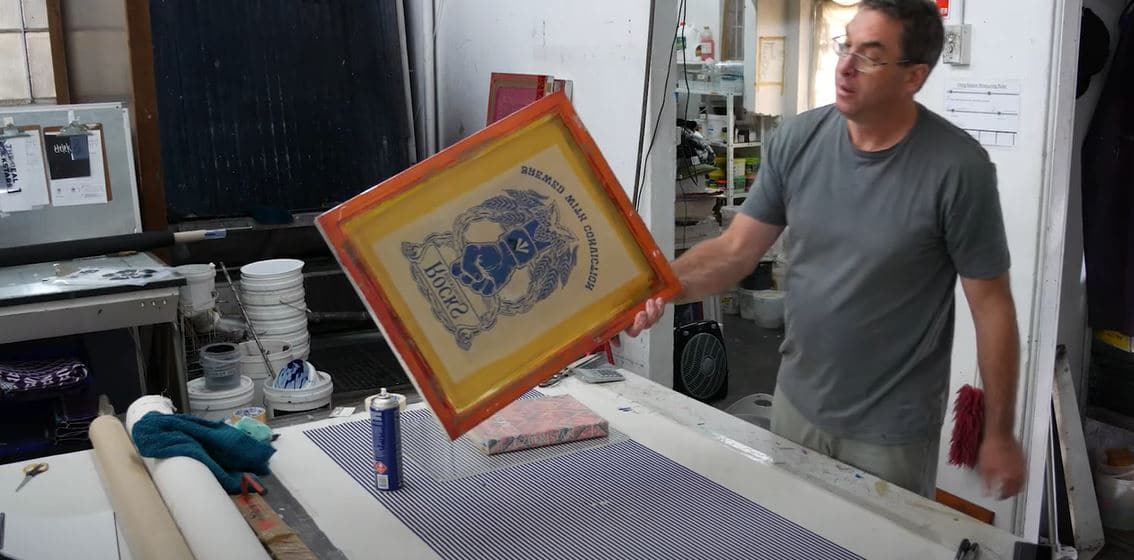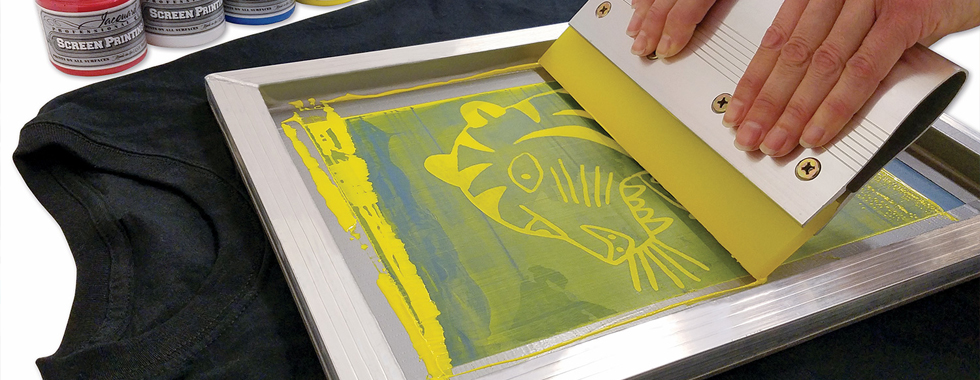The Crucial Guide to Understanding Screen Printing and Its Versatile Uses
Screen printing has a rich background that goes back to old times, developing right into an innovative technique used across various markets today. This overview explores the complexities of the screen printing procedure, outlining its applications in marketing, home, and style style - 10:9 Design Screen Printing Texas. Comprehending these principles can open imaginative possibility for both business and imaginative tasks. The adhering to areas will reveal vital suggestions and techniques to enhance one's screen printing endeavors
The History of Screen Printing
Screen printing has origins that trace back centuries, its evolution mirrors the creative and technological advancements of numerous cultures. Coming from old China, the strategy was initially made use of for enhancing fabrics and later spread to Japan, where it ended up being important to Ukiyo-e woodblock printing. The method changed to Europe in the 18th century, where it acquired popularity among craftsmens and commercial printers. The invention of picture solution in the 20th century reinvented screen printing, enabling for even more complex designs and better effectiveness. Musicians like Andy Warhol even more propelled its appeal, using the tool to produce legendary works that combined commercialism and fine art. By the late 20th century, screen printing had actually established itself as a flexible strategy, employed in vogue, advertising and marketing, and fine art. Today, it remains to evolve, integrating electronic modern technology and broadening its applications throughout various markets.
The Screen Printing Refine Explained
Screen printing transforms creative visions right into tangible layouts through a series of precise steps. Initially, a picture is developed and afterwards transferred onto a screen, normally made from great mesh material extended over a framework. A light-sensitive solution is put on the screen, which is revealed to light, solidifying in locations not covered by the photo. After rinsing the unhardened emulsion, a pattern is created.
Next off, the screen is put over the substratum, whether it be material, paper, or one more material. Ink is then pushed through the open areas of the stencil utilizing a squeegee, transferring the layout onto the substratum listed below. This procedure can be duplicated for numerous shades, calling for separate displays for each hue. Lastly, the printed item is cured using warmth to assure the ink sticks appropriately, leading to a resilient, dynamic style prepared for use.
Kinds Of Screen Printing Techniques

Furthermore, specialized strategies, such as discharge screen printing, eliminate dye from the textile to develop softer prints, while aluminum foil screen printing uses metallic aluminum foil to attain a glossy surface (10:9 Design Screen Printing). Each strategy supplies distinctive attributes, satisfying numerous innovative demands and manufacturing scales, ultimately increasing the opportunities within the screen printing domain
Applications of Screen Printing in Various Industries

Furthermore, the signage and advertising industries utilize screen printing for creating appealing display screens and banners. This technique permits strong shades and detailed layouts that catch attention. In electronic devices, screen printing is utilized for applying conductive inks to motherboard, necessary for component links. The home décor sector welcomes screen printing to create distinctive layouts on textiles and wall surface art. In general, screen printing offers as an essential device across varied fields, boosting products with individualized and visually enticing graphics.
Tips for Successful Screen Printing Projects
While taking on a screen printing job, mindful attention to detail can substantially improve the final outcome. First, choosing premium products is crucial; this includes the screen, inks, and substratums. Using suitable mesh matters can influence ink deposition and detail resolution. Prep work is equally vital; detailed cleaning of displays and correct exposure times guarantee crisp prints.
Next, precise registration is crucial for multi-color prints. Making use of placement devices can help achieve exact layering. In addition, screening prints on scrap materials prior to manufacturing aids identify possible concerns without losing resources.

Frequently Asked Questions
What Materials Are Ideal for Screen Printing on Textile?
Cotton and polyester blends are excellent for screen printing on textile because of their durability and ink absorption. Additionally, specialized materials like silk or canvas can generate one-of-a-kind textures and coatings, boosting the total style top quality.
Exactly how Do I Tidy and Maintain Screen Printing Equipment?
To keep and cleanse screen printing tools, one ought to regularly clean displays with proper solvents, evaluate squeegees for wear, lube moving components, and store all items in a dry, dust-free environment to prolong their life-span.
What Are the Ecological Impacts of Screen Printing?
Screen printing can have significant ecological influences, consisting of chemical waste from solvents and inks, water usage throughout cleansing procedures, and power consumption. Lasting techniques and green materials are necessary for minimizing these unfavorable effects.
Can Screen Printing Be Done in your home Effectively?
Screen printing can be successfully done at home with the right products and techniques. Enthusiasts can produce high quality prints, though success depends on their ability level, devices, and understanding of the procedure included.
What Are the Costs Connected With Starting a Screen Printing Company?

Beginning a screen printing service involves expenses for devices, materials, and office. First expenditures commonly range from a couple of hundred to several thousand dollars, relying on the scale, quality of machinery, and wanted manufacturing capability.
Screen printing has a rich history that dates back to old times, advancing into an innovative strategy made use of throughout different industries today. Another strategy, rotary screen printing, utilizes cylindrical displays, promoting continual printing on textile rolls, consequently enhancing effectiveness for large manufacturings. Furthermore, specialty techniques, such as discharge screen printing, remove dye from the fabric to create softer prints, while foil screen printing uses metallic aluminum foil to accomplish a shiny coating. In the fashion industry, screen printing is commonly made use of to create vibrant designs on clothing, making it possible for brand names to showcase their distinct designs. Cotton and polyester blends are optimal for screen printing on material due to their sturdiness and ink absorption.